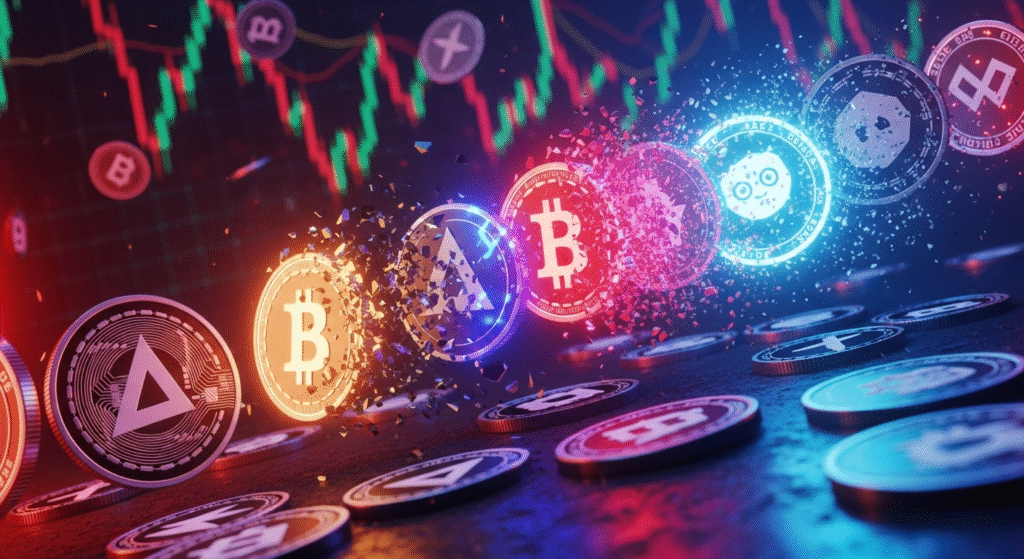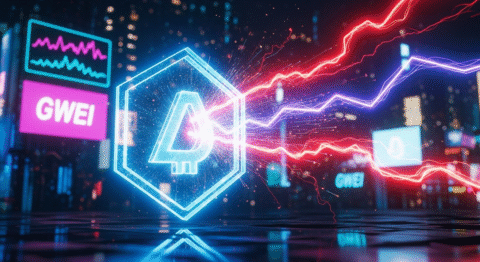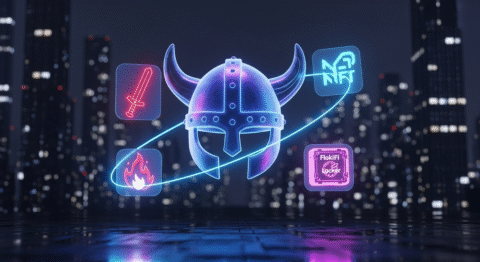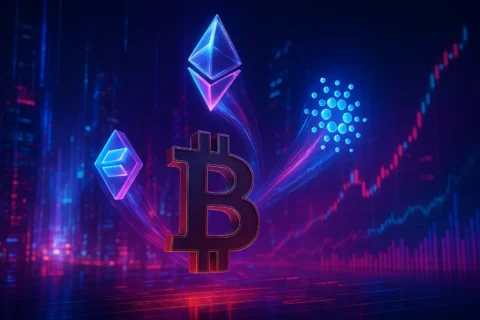Are you constantly bombarded with exciting new altcoin projects and meme coin sensations, only to find yourself wondering if you’re playing a high-stakes lottery where the house always wins? In the electrifying, yet often treacherous, world of decentralized finance, the allure of astronomical gains in meme coins is undeniable. However, beneath the vibrant community-driven hype and viral marketing often lurks a sinister reality: the rug pull. This insidious scam leaves investors with worthless tokens and empty pockets. But what if there was a way to sift through the noise and identify potentially fraudulent projects before you invest your hard-earned crypto? Worry not, because understanding tools like Token Sniffer can be your first line of defense.
The cryptocurrency market, particularly the altcoin and meme coin sectors, has experienced explosive growth, attracting millions of new investors. While this democratization of finance is exciting, it has also created a fertile ground for scammers. The sheer volume of new tokens launched daily makes manual due diligence a daunting, if not impossible, task for most. This is precisely why sophisticated analytical tools have become indispensable. Token Sniffer and other similar platforms aim to provide a data-driven shield, helping navigate the murky waters of emerging crypto opportunities and steer clear of devastating rug pulls.
Crypto Market Overview
The cryptocurrency landscape is a dynamic and ever-evolving ecosystem. As of today, the broader market is experiencing a period of cautious optimism. Bitcoin and Ethereum remain the dominant forces, but the real excitement, and indeed the greatest risk, often lies within the altcoin and meme coin sectors. We’ve seen significant capital flow into these smaller-cap assets, driven by social media trends, community enthusiasm, and the promise of life-changing returns.
Recent months have highlighted a continued surge in meme coin popularity, with tokens inspired by internet culture and popular memes often experiencing rapid price pumps. This surge, however, is frequently met with equally rapid dumps, characteristic of rug pull schemes. Airdrops, a common method for distributing tokens and rewarding early adopters or participants in a blockchain project, also continue to be a popular strategy. While legitimate airdrops can be a great way to acquire new tokens, they can also be used as bait in phishing or scam operations. The sheer accessibility of launching new tokens on various blockchain networks like Ethereum, Binance Smart Chain (BSC), and Solana means that the market is flooded with new projects daily.
The rise of decentralized exchanges (DEXs) like Uniswap and PancakeSwap has further democratized token listing. While this fosters innovation, it also means that tokens can be listed and traded with minimal vetting. This is where the importance of on-chain analytics and specialized tools such as a Rug pull detector becomes paramount. These platforms analyze the smart contract code and transaction data of newly launched tokens, looking for pre-programmed vulnerabilities or malicious intent.

The Core Concept: How Token Sniffer Actually Works
To truly appreciate how Token Sniffer functions, it’s essential to understand the underlying mechanisms it scrutinizes.
What Are Altcoins / Meme Coins / Airdrops?
Altcoins: The term “altcoin” is short for “alternative coin,” referring to any cryptocurrency other than Bitcoin. This is a vast and diverse category that includes everything from Ethereum, the second-largest cryptocurrency by market capitalization, to thousands of smaller, newer tokens. Altcoins often aim to improve upon Bitcoin’s technology, introduce new features, or serve specific niches within the crypto space, such as decentralized finance (DeFi), non-fungible tokens (NFTs), or gaming.
Meme Coins: Meme coins represent a subset of altcoins that gain popularity and value primarily through social media trends, internet memes, and community hype rather than fundamental utility or technological innovation. Dogecoin and Shiba Inu are prime examples, initially created as a joke but evolving into significant market players due to their viral nature and strong community backing. However, this meme-driven nature also makes them highly susceptible to pump-and-dump schemes and rug pulls.
Airdrops: An airdrop is a marketing tactic used by cryptocurrency projects to distribute free tokens to a wide audience. This can be done to reward existing token holders, incentivize participation in a new project, or simply to increase awareness. Airdrops can be a legitimate way to discover and acquire new crypto assets, but they can also be a vector for scams, where users are asked to connect their wallets to malicious websites or share private keys.
Key Components & Technologies
The security and legitimacy of any cryptocurrency token are deeply intertwined with its underlying smart contract and its integration with the broader blockchain ecosystem. Token Sniffer, like other similar tools, meticulously examines these components:
Smart Contract Analysis: The core of Token Sniffer lies in its ability to analyze the source code of a token’s smart contract. This code, typically written in Solidity for Ethereum and EVM-compatible chains, dictates all the token’s functionalities, including how it can be transferred, how its supply is managed, and any special rules or restrictions. Sophisticated tools look for specific patterns and code structures indicative of malicious intent.
Common Rug Pull Tactics Detected:
- Honeypots: Contracts that allow tokens to be bought but not sold.
- Blacklisting/Whitelisting: The ability for the contract owner to freeze or prevent certain addresses from transacting.
- Creator Minting/Burning Capabilities: Unrestricted ability for the creator to mint new tokens, diluting the supply, or burn tokens from other holders.
- Unusual Tax Mechanisms: High transaction taxes, or taxes that are arbitrarily applied or change without notice.
- Renounced Ownership/Unverified Contracts: While not always malicious, a lack of verified source code for a smart contract, or renounced ownership of a contract that still has control functions, can be red flags.
- Liquidity Locking: The absence of locked liquidity on decentralized exchanges is a major indicator of an impending rug pull. If the team can drain the liquidity pool, they can effectively break the trading pair and collapse the token’s price.
Blockchain Technology: Token Sniffer operates on the data available on various blockchains. It accesses public transaction histories, contract deployments, and token contract data to build its analysis. This reliance on blockchain data ensures a degree of transparency, as all on-chain actions are recorded immutably.
Decentralized Finance (DeFi) Integration: Many new tokens are launched within the DeFi ecosystem, particularly on DEXs. Token Sniffer often checks if a token has sufficient liquidity locked on these platforms, as this is a critical step to prevent a rug pull.
The Data-Driven Perspective
The real power of tools like Token Sniffer lies in their ability to ingest and interpret vast amounts of on-chain data.
Market Data & Trends
Looking at market data, we see a consistent, albeit volatile, upward trend in the total market capitalization of altcoins. In the last year alone, the altcoin market has seen significant growth, with many new projects emerging. However, this growth also correlates with an increase in the number of rug pull incidents. Data from blockchain security firms consistently shows that a significant percentage of exploited DeFi protocols and scam tokens originate from new, unvetted projects.
For example, during bull cycles, meme coins often experience parabolic growth, attracting retail investors who are FOMO-driven. Simultaneously, a shadow economy of scam tokens thrives, leveraging the same hype and community building tactics. A recent analysis of tokens launched on Binance Smart Chain (BSC) indicated that over 60% of new tokens exhibit characteristics that could be associated with rug pulls or scams, ranging from locked liquidity issues to honeypot functionality. This stark statistic underscores the need for automated analysis tools.
Tokenomics & Market Health
Tokenomics refers to the economic design of a cryptocurrency, encompassing its supply, distribution, utility, and governance. Analyzing tokenomics is crucial for understanding a token’s long-term viability and potential for manipulation.
Supply and Distribution: Does the project have a fixed or inflationary supply? Is a large percentage of tokens held by a few early investors or the development team? High concentration of ownership can be a red flag, as these holders could potentially dump their tokens, crashing the price. Token Sniffer assesses wallet distributions.
Liquidity: On decentralized exchanges, trading pairs are formed with a base currency (like ETH or BNB) and the new token. The availability and locking of this liquidity pool are critical. If liquidity isn’t locked for a significant period, the creators can withdraw it, leaving token holders unable to sell their assets. Token analysis tools often verify the presence and duration of liquidity locks on platforms like Uniswap V2/V3 or PancakeSwap. A common metric is the “liquidity percentage” relative to the market cap. Low liquidity can also indicate manipulation.
Transaction Taxes/Fees: Some tokens implement transaction taxes that are redistributed to holders, used for marketing, or burned. While this isn’t inherently bad, unusually high taxes, or taxes that can be arbitrarily changed by the contract owner, can be problematic. Token Sniffer often flags tokens with excessive or poorly explained transaction fee structures.
Minting and Burning Capabilities: A smart contract that allows the owner to mint an unlimited number of new tokens (increasing supply and devaluing existing ones) or burn tokens from other holders without a clear, predefined mechanism is a significant risk. Token Sniffer scrutinizes functions related to token creation and destruction.
Risks, Challenges & Competition
While the allure of rapid gains in meme coins and emerging altcoins is strong, the risks are substantial. Understanding these pitfalls is key to leveraging tools like Token Sniffer effectively.
Risks of Altcoins and Meme Coins
Volatility: Meme coins, in particular, are subject to extreme price swings. Their value is often driven by social media sentiment rather than underlying fundamentals, making them highly unpredictable. This volatility can lead to rapid losses for investors.
Security Vulnerabilities: Beyond deliberate scams, smart contracts can also contain exploitable bugs that lead to loss of funds. Even legitimate projects can be targeted by hackers.
Regulatory Uncertainty: The regulatory landscape for cryptocurrencies is still developing. New regulations could impact the value and legality of certain altcoins and meme coins, creating market instability.
Lack of Utility and Fundamentals: Many meme coins lack any real-world use case or technological innovation. Their value is purely speculative, making them inherently riskier than utility tokens or those powering active decentralized applications.
Scams and Rug Pulls: This is the most significant risk. The ease of launching tokens combined with the potential for quick profits makes the space a target for malicious actors. Rug pulls are a rampant problem, and while tools like Token Sniffer help, they are not foolproof.
How Does Token Sniffer Stack Up Against Competitors?
The market for crypto analysis tools is competitive, with various platforms offering different functionalities. Here’s a general comparison:
| Feature | Token Sniffer | Other Tools (e.g., CoinMarketCap’s token scanners, DEXTools’ analytics) |
|---|---|---|
| Primary Focus | Smart contract security, rug pull detection | Price tracking, trading analytics, charting, broader market data |
| Key Strength | Deep dive into contract code for malicious patterns, honeypot detection | Real-time market data, trading volume, liquidity pool monitoring |
| User Interface | Generally simple, focused on analytics reports | Often more complex, designed for active traders |
| Data Depth | Focuses on contract vulnerabilities, liqudity. | Provides broader market metrics, historical price data, social sentiment. |
| Ease of Use | Relatively easy for basic checks | Can vary significantly; some are beginner-friendly, others are advanced. |
| Cost | Often free for basic scans, premium features may exist | Varies; many offer free tiers with paid upgrades for advanced features. |
| Scope | Primarily focused on ERC-20, BEP-20 tokens | Covers a wider range of blockchains and token standards. |
While a tool like Token Sniffer specializes in the critical task of identifying potentially malicious contract functionalities, it’s most effective when used in conjunction with other tools that provide market context, such as real-time price tracking, trading volume, and community sentiment analysis from platforms like DEXTools or CoinMarketCap. Think of it as one layer of a multi-layered security approach.
The Future Outlook
The landscape of altcoins and meme coins is constantly evolving. As blockchain technology matures and DeFi protocols become more sophisticated, so too will the methods used by both legitimate projects and scammers.
What’s Next for Altcoins / Meme Coins / Airdrops?
Increased Sophistication in Scams: As tools like Token Sniffer become more prevalent, scammers will likely develop more advanced techniques to evade detection. This could involve more subtle contract vulnerabilities or novel social engineering tactics.
Focus on Utility and Real-World Application: While meme coins will likely persist due to their cultural impact, the long-term trend for sustainable altcoins points towards projects that offer genuine utility, solve real-world problems, or power innovative decentralized applications. This shift will make purely community-driven tokens without any underlying function even riskier.
Enhanced Regulatory Scrutiny: As the crypto market grows, so will regulatory oversight. This could lead to greater standardization and more stringent requirements for token launches, potentially making it harder for outright scams to operate, but also potentially stifling some forms of innovation.
AI-Powered Analytics: The future will likely see the integration of artificial intelligence and machine learning into crypto analysis tools. AI can identify patterns and anomalies in on-chain data that traditional rule-based systems might miss, offering even more powerful detection capabilities. This could further augment the work done by platforms like Token Sniffer.
User Education as a Key Defense: Alongside technological solutions, user education will remain critical. A well-informed investor is the best defense against scams. Understanding how to interpret smart contract analyses, perform basic due diligence, and recognize common red flags provided by tools like Token Sniffer, will be essential skills.
Conclusion
Navigating the altcoin and meme coin markets requires a blend of cautious optimism and rigorous due diligence. Tools like Token Sniffer are invaluable allies in this endeavor, providing critical insights into the potential security and legitimacy of new tokens by scrutinizing their underlying smart contracts. They help identify common red flags associated with rug pulls, such as lacking locked liquidity or possessing developer-controlled vulnerabilities.
Remember, no tool is a guaranteed shield against all forms of fraud, but integrating security analysis tools into your investment routine significantly lowers your risk exposure. Always complement these tools with your own research, community sentiment analysis, and a healthy dose of skepticism, especially when presented with opportunities that seem too good to be true.
What are your thoughts on navigating the meme coin craze? Have you had any experiences with rug pulls, and how did you identify them? Share your insights and strategies in the comments below! For more expert analysis and tips on navigating the cryptocurrency space safely, be sure to subscribe to our newsletter and explore our related articles on DeFi security and altcoin deep dives.
FAQs
Q1: What is a rug pull, and how does Token Sniffer help detect them?
A rug pull is a type of scam where cryptocurrency developers abandon a project and run away with investors’ funds. This typically involves draining the liquidity pool of a decentralized exchange, making the token worthless. Token Sniffer analyzes the smart contract code of tokens to identify malicious features or patterns, such as the ability to unfairly lock liquidity, mint unlimited tokens, or blacklist holders, which are common indicators of potential rug pulls.
Q2: Can Token Sniffer guarantee I won’t invest in a scam?
No. While Token Sniffer is a powerful tool for identifying suspicious code and common scam mechanisms, it is not a foolproof guarantee. Scammers are constantly evolving their methods, and some scams may not leave obvious traces in the smart contract code. It’s crucial to use Token Sniffer as part of a broader due diligence process that includes researching the team, project roadmap, community sentiment, and tokenomics.
Q3: What are the most common red flags that Token Sniffer looks for?
Token Sniffer typically flags tokens where the smart contract:
- Lacks verified source code.
- Has a large percentage of tokens held by a few addresses (potential for dumping).
- Has no locked liquidity on decentralized exchanges.
- Allows the owner unrestricted minting or burning capabilities.
- Implements unusual or excessively high transaction taxes.
- Exhibits honeypot characteristics (tokens can be bought but not sold).
Q4: How can I perform my own due diligence in addition to using a Rug pull detector?
Besides using a Rug pull detector, you should:
- Research the Team: Look for transparent and identifiable team members with a credible track record. Anonymous teams are a significant red flag.
- Examine the Whitepaper: A well-written whitepaper should clearly outline the project’s goals, technology, use case, and tokenomics.
- Analyze Community Engagement: Check social media channels (Telegram, Discord, Twitter) for active and genuine community discussion. Beware of overly aggressive marketing or censorship of critical questions.
- Verify Liquidity: Ensure sufficient liquidity is locked on a reputable decentralized exchange for a substantial period.
- Understand Tokenomics: Assess supply, distribution, vesting schedules, and any transaction taxes.
Q5: Are all meme coins prone to rug pulls?
Not all meme coins are designed as scams, but the nature of their popularity (driven by hype and social media rather than utility) makes them inherently more susceptible to pump-and-dump schemes and rug pulls. The ease with which new meme coins can be created and launched means the ceiling for potential scams is very high. Therefore, extreme caution and thorough investigation are always recommended when considering investing in meme coins, with tools like Token Sniffer being essential in this process.






